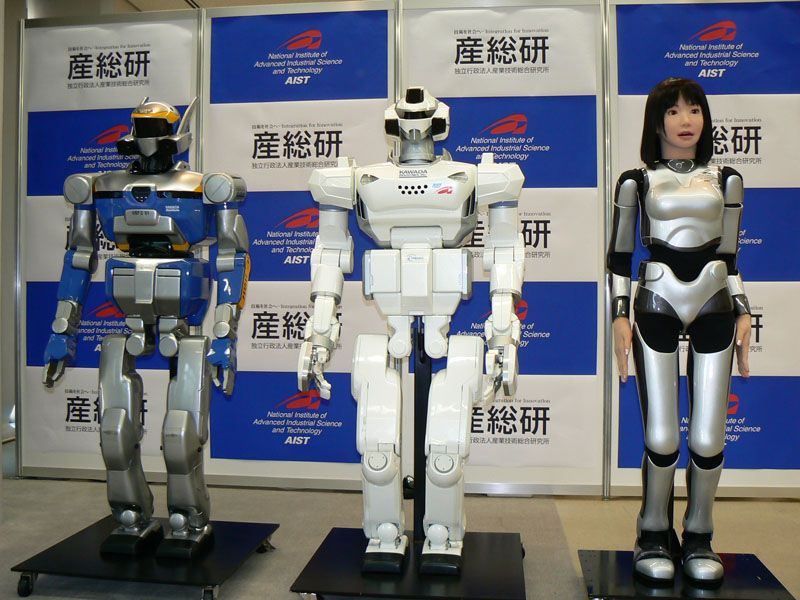The Future Of Artificial Human Beings!
Feb 13, 2019 • 3 views
What is the first thing that comes to mind when you think of a robot?
For many people it is a machine thatimitates a human—like the androids in Star Wars, Terminator and Star Trek: The Next Generation. However much these robots capture our imagination, such robots still only inhabit Science Fiction. People still haven't been able to give a robot enough 'common sense' to reliably interact with a dynamic world. However, Rodney Brooks and his team at MIT Artificial Intelligence Lab are working on creating such humanoid robots.
The type of robots that you will encounter most frequently are robots that do work that is too dangerous, boring, onerous, or just plain nasty. Most of the robots in the world are of this type. They can be found in auto, medical, manufacturing and space industries. In fact, there are over a million of these type of robots working for ustoday.
Some robots like the Mars RoverSojourner and the upcoming MarsExploration Rover, or the underwater robotCaribouhelp us learn about places that are too dangerous for us to go. While other types of robots are just plain fun for kids of all ages. Popular toys such as Teckno, Polly or AIBO ERS-220 seem to hit the store shelves every year around Christmas time.

And as much fun as robots are to play with, robots are even much more fun to build. In Being Digital, Nicholas Negroponte tells a wonderful story about an eight year old, pressed during a televised premier of MITMedia Lab's LEGO/Logo work at Hennigan School. A zealous anchor, looking for a cute sound bite, kept asking the child if he was having fun playing with LEGO/Logo. Clearly exasperated, but not wishing to offend, the child first tried to put her off. After her third attempt to get him to talk about fun, the child, sweating under the hot television lights, plaintively looked into the camera and answered, "Yes it is fun, but it's hard fun."
But what exactly is a robot?
As strange as it might seem, there really is no standard definition for a robot. However, there are some essential characteristics that a robot must have and this might help you to decide what is and what is not a robot. It will also help you to decide what features you will need to build into a machine before it can count as a robot.
Nowadays, humanlike robots are gaining more and more popularity but some robotics experts, including the University of Edinburgh’s Robert Fisher, see the concept of human-like robots as ill-advised. “I don’t think artificial intelligence will ever be like humans,” Fisher says.
On the evidence of Westworld, Detroit: Become Human andEx Machina– none of which paint the most optimistic portrait of human-android relations – perhaps we will all be better off if our future robot assistants are moreWall- E or R2-D2 in Star Wars than Star Trek’s Data or Blade Runner’s Pris.
